As we know, I compiled an article in December 2018 comparing the electrical architecture of the three mass-produced Tesla models (click Evolution of Tesla’s Electronic and Electrical Architecture to jump), which mentioned the “ring network” when discussing Model 3, namely the Zone Controller (Zone Controller, refer to “BEG Evolution of EEA (2017)”). We will temporarily set aside the topic of the Zone Controller.
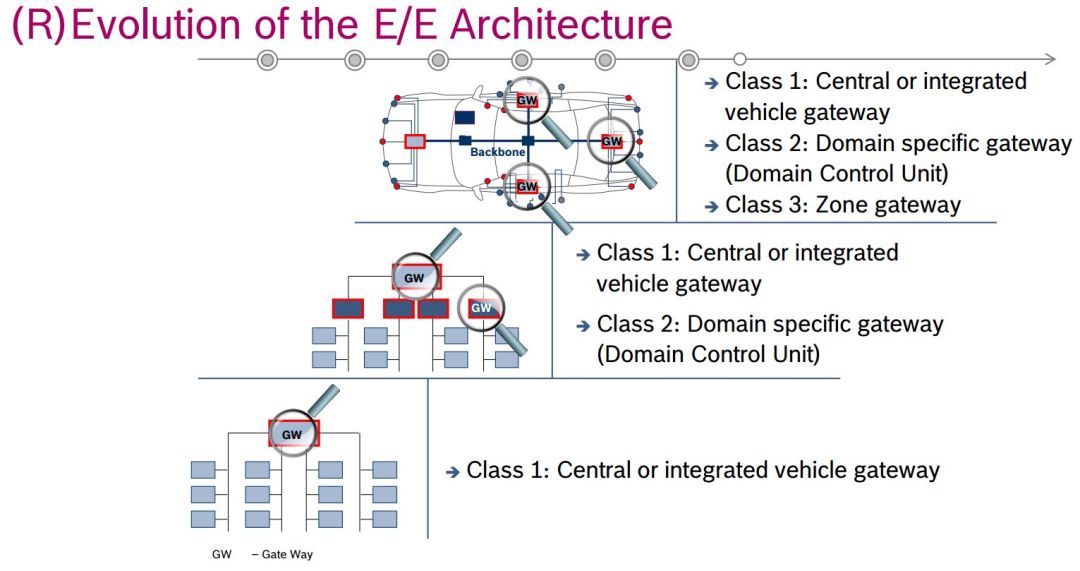
When organizing the topology diagram, I intentionally distinguished between primary and secondary controllers based on network resource allocation, and I will mark it here again. The AICM (Autopilot & Infotainment Control Module, Autopilot and Infotainment Control Module), BCM RH (Body Control Module Right, Right Body Control Module) and BCM LH (Body Control Module Left, Left Body Control Module).

We can even make preliminary markings of the approximate locations of these three major controllers (personally speculating that the BCM RH position will be further back; those with detailed layouts can confirm).
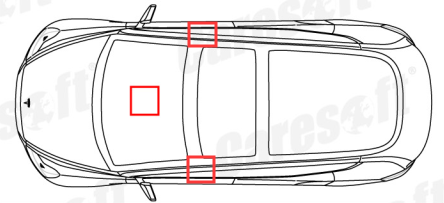
So the question arises, how are the resource allocation and functions of these three major controllers distributed? Is it based on the “inheritance principle,” the “proximity principle,” or something else? What role does the PDU (Power Distribution Unit, Power Distribution Unit) play? These are the key points we will focus on today and what our recent series of articles aims to clarify.
Additionally, since the entire process is quite labor-intensive, the update cycle for the series of articles may be longer, and the original plan of “compiling everything into one article” has been updated to a “series of articles” (BCM RH – BCM LH – AICM – PDU).
…
Today, let’s first take a look at the BCM RH.
The BCM RH has around 10 connectors, 300+ pins, and uses over 220 pins, with the general situation as follows:
1. 10 channels of CAN, 12 channels of LIN (connecting ultrasonic radar sensors);
2. Very few switch signal inputs, yes, just like the feeling you get when you sit in the Model 3 — hardly any switches are visible — except for windows and seats;
3. The covered systems include passive safety, windows, accessories, air conditioning, door locks, interior lighting, rearview mirrors, parking assistance, external lighting, external mirrors, tailgate, entertainment, parking, and seats; of course, the changes in this design are far from what the above text can show, but a few points:
1) Involvement in passive safety, air conditioning, entertainment, parking assistance, and parking, which is the biggest difference from current traditional designs;
2) The remaining traditional body domain systems are almost perfectly divided between BCM RH and BCM LH in the design of Tesla Model 3; even for the involved passive safety, entertainment, etc., the distribution method is quite thoughtful. Below, let’s first appreciate the schematic from the “soul artist”:
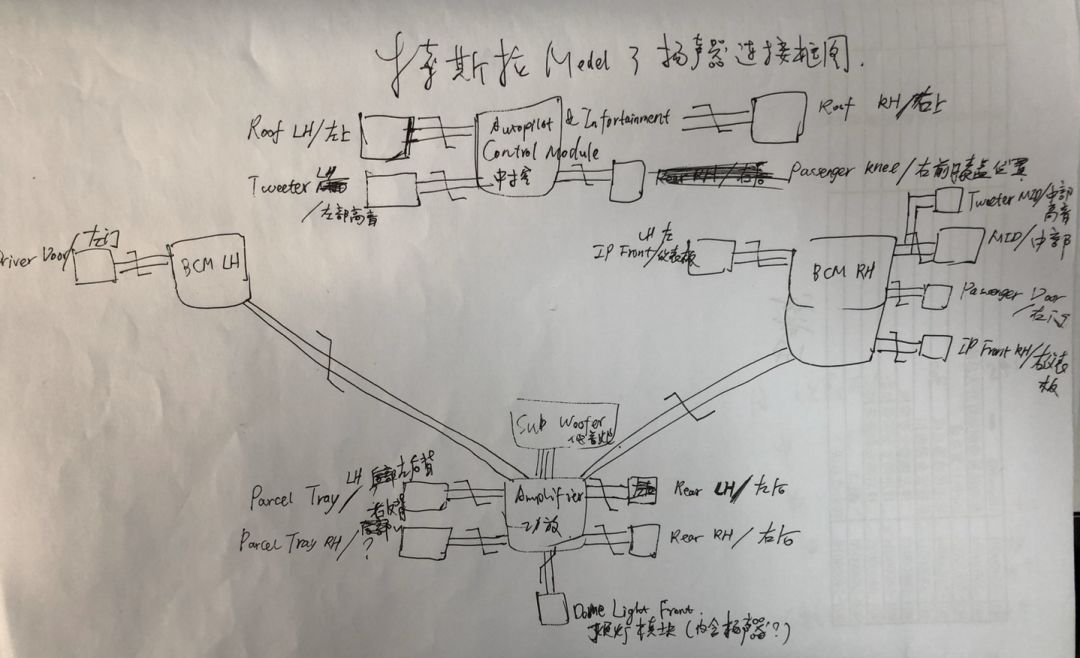
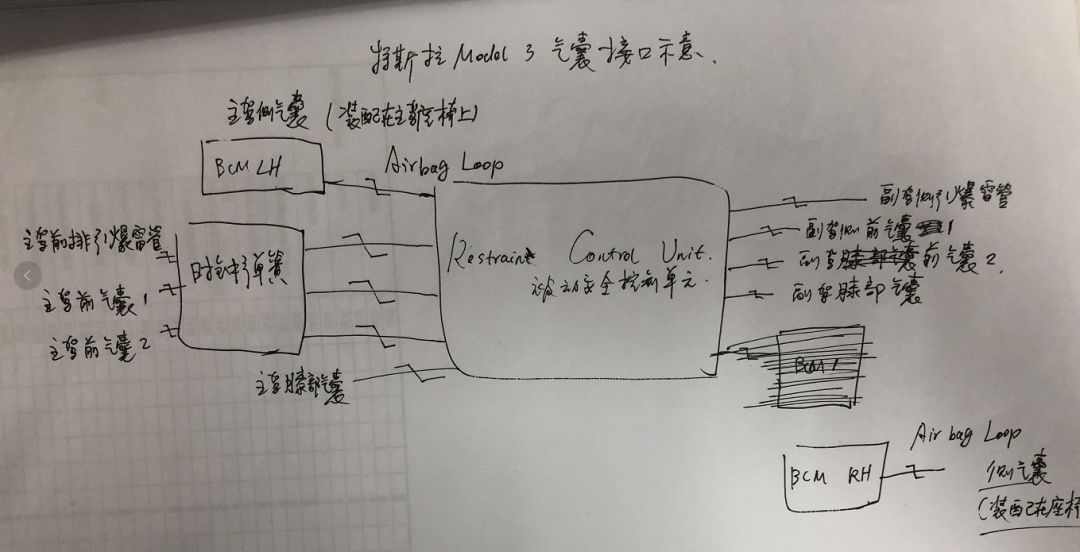
3) There are also exceptions, such as the functions of the interior rearview mirror and tailgate, which are implemented by BCM RH because there is nothing to distribute; parking assistance is also entirely implemented by BCM RH.
Next, let’s refer to the system division to explore the details.
1. Passive Safety System
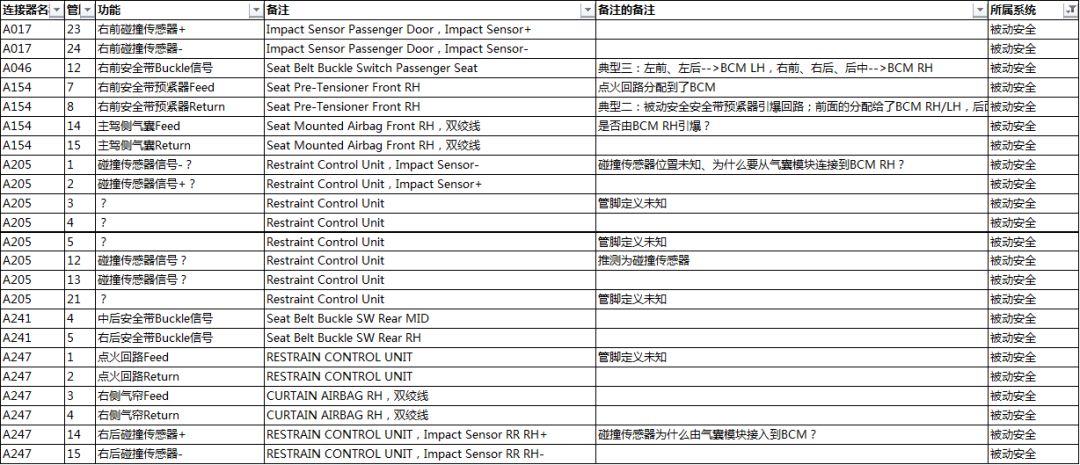
From the above table, we can see that BCM RH connects both the collision sensor signals and the ignition circuit, and the buckle signal goes without saying; I have several questions here:
1. Is the hardware and software design of the collision signal and ignition circuit of high standards? What are the input-output and risk considerations for Tesla handling this in BCM RH?
2. After the collision sensors are dispersed, how will the collision output hardwire and bus signals be output for the entire vehicle?
2. Parking Assistance

There’s nothing much to say about this, just the 12 ultrasonic radars around the vehicle.

In China, the APA (Autonomous Parking Assist, Parking Assistance Module) controller may be used to receive the information from the ultrasonic radars and process the parking-related logic, so… only children look for mature product ECUs; automakers with integrated software and hardware development capabilities need to develop everything themselves…
3. Windows

First of all, all four windows of the Tesla Model 3 have one-touch up and down functions, so they must be equipped with anti-pinch solutions.
As for the 5-PIN anti-pinch motor, after communicating with industry insiders, it tends to be a current-type Hall effect, dual Hall solution; if there’s accurate information, please contact me privately.
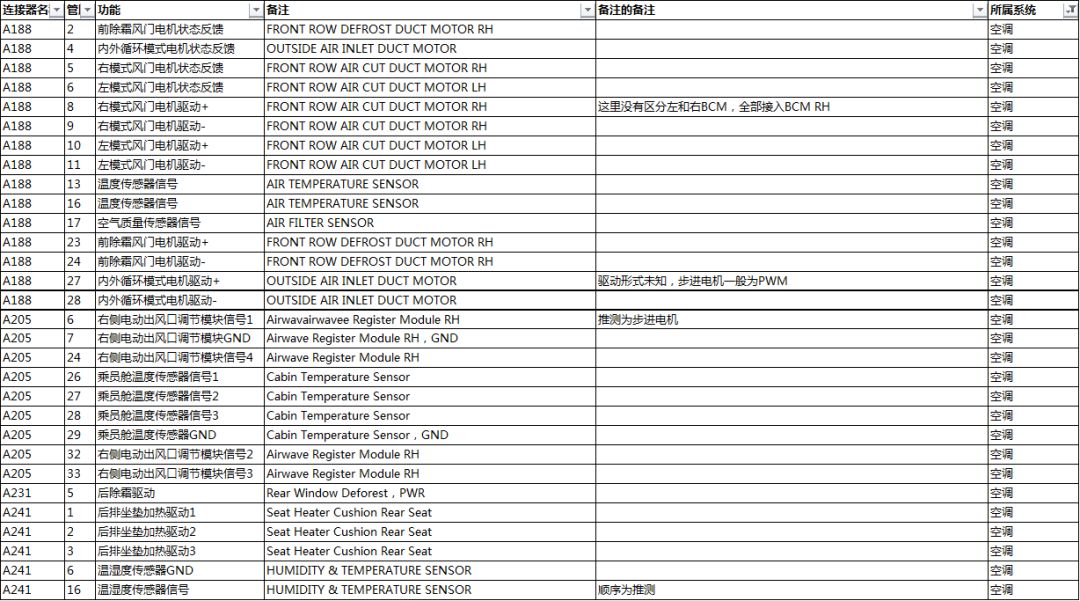
4. In-Vehicle Network

The 10 channels of CAN in BCM RH have exceeded the current CAN resource configuration limit of some gateways; of course, if understood according to the design concept of the zone controller, then everything becomes reasonable. The question regarding CAN connections here is: Are the 4 channels of CAN between BCM RH and AICM routed directly through BCM RH or is there signal processing or routing involved?
5. Power Distribution

Note that there is a distinction between driving and power supply; a conventional design, but some of these need to work when IGN OFF — for example, “A205-38 cabin heating module power supply” used for remote air conditioning or pet mode, etc. — thus requiring the BCM RH to maintain power supply.
6. Accessories

The password lock may be an unexpected gain later.
7. Air Conditioning
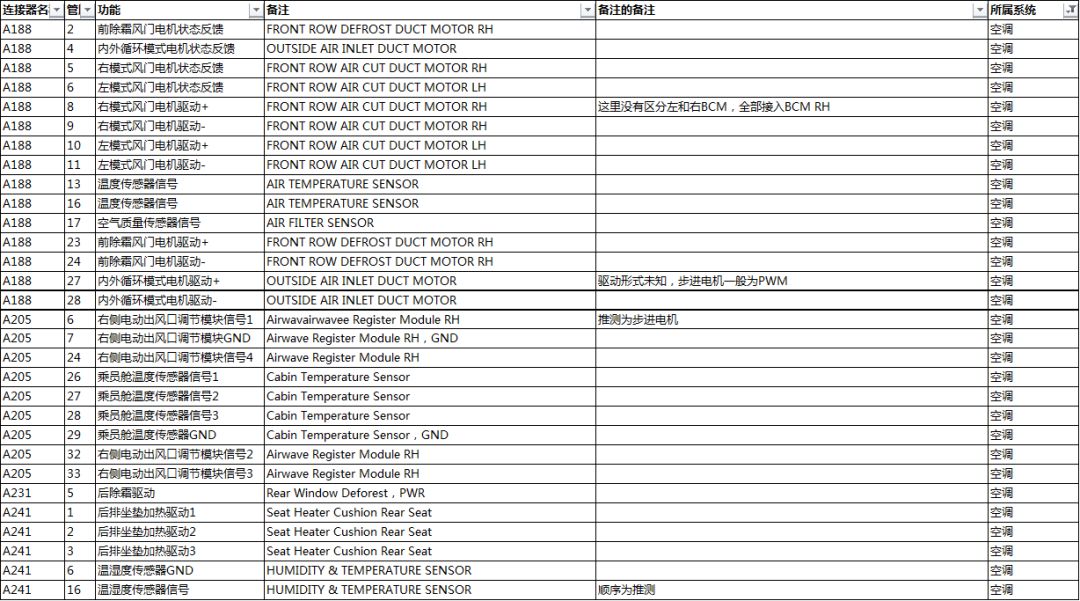
… No air conditioning controller involved. Also, everyone should note that the electric air vent adjustment module (Airwave Register Module RH, presumed to be the dashboard’s cross-vent) is also divided into left and right.
8. Door Locks

This is the first appearance of switch signals, one is the door lock switch, and the other is the pressure switch on the door handle. Additionally, we noticed that many switches are 3-PIN, connecting to a 2-PIN controller; we speculate this is for diagnostic needs.

9. Interior Lighting

What can I say, “divide and conquer”.
10. Interior Rearview Mirror

Automatically anti-glare, temporarily quite simple.
11. External Lighting

… I was still wondering why I didn’t see the front combination lights; I checked and found they were here.
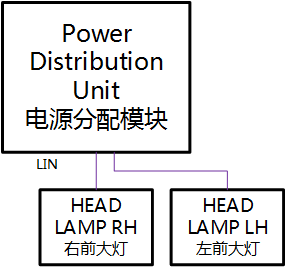
12. External Mirrors

Nothing much to say, routine operation.
13. Tailgate

The tailgate function is relatively simple for now, but if an electric tailgate is equipped, this controller should not be omitted.
14. Entertainment

The distribution of the car’s speakers can be said to be the essence. There are three doubts here:
1. What kind of sensor is the “proximity sensor”?
2. Is Model 3 a digital speaker?
3. How does the AICM audio source transmit audio data with BCM RH, BCM LH, and the amplifier module?
15. Parking

The parking caliper, one for BCM RH and one for BCM LH, perfectly embodies the design concept of zone controllers. They back each other up and distribute tasks based on proximity.
16. Seats
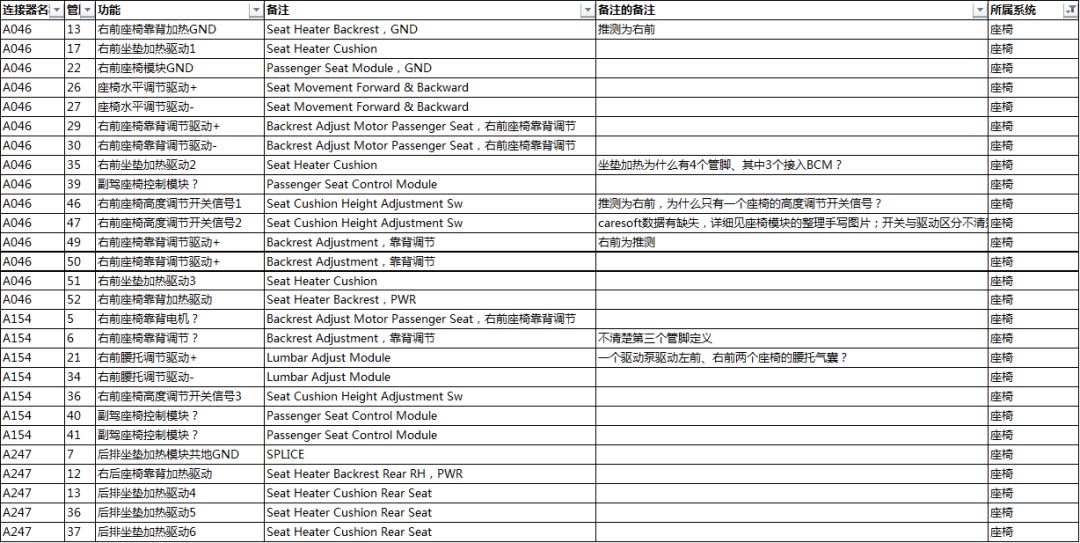
It seems there’s still a “right front seat module” left over… could it be that BCM RH resources are insufficient???
…
By now, I believe everyone has a general judgment on the role of BCM RH. It is not difficult to see:
1. The functions of the traditional body domain — from windows to door locks, to air conditioning, to interior and exterior lighting, to external mirrors, to seats — are perfectly divided between BCM LH and BCM RH based on left and right;
2. Additional involvement in entertainment domain (speakers), passive safety (collision sensors/ignition circuit), and parking (parking brake calipers) is also distributed between BCM LH and BCM RH based on left and right proximity;
3. For simple functions that cannot be divided, such as the interior rearview mirror and tailgate, they are completed by BCM RH.
Nothing ventured, nothing gained; this phrase fits perfectly in the process of “the changes in Tesla’s overall electrical architecture leading to a new function distribution”; indeed, the core logic behind all this may remain unknown (is the total vehicle harness controlled at around 100m?), but as we delve deeper into the series of articles, we may catch a glimpse of the truth.
Finally, those interested in the complete pin definition of BCM RH for Tesla Model 3 can reply “BCM RH” in the background. Also, feel free to join my knowledge circle: The Cold Winter Melon
Who is The Cold Winter Melon?
An amateur automotive electronics engineer, a funny dad; an arrogant person, a low-quality content creator.
Welcome to find me on Weibo/Zhihu/WeChat/Toutiao, let’s accelerate the transformation of automobiles towards electrification/networking/intelligence/sharing together!